Road Safety in European Cities: Performance Indicators and Governance Solutions
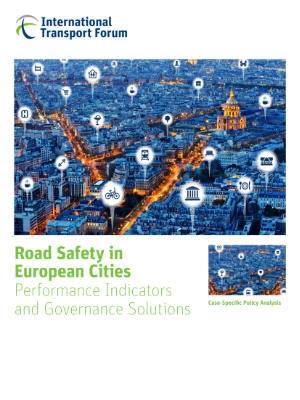
This reports benchmarks road safety performance for 72 urban areas, mostly in Europe, and illustrates governance solutions to improve urban road safety with case studies conducted in Lisbon (Portugal) and Riga (Latvia). The report proposes new road safety indicators to assess the level of risk for each mode of transport. It finds that a modal shift away from private motor vehicles could significantly enhance road safety in dense urban areas and deliver public health benefits associated with increased physical activity and improved air quality.
New Directions for Data-Driven Transport Safety
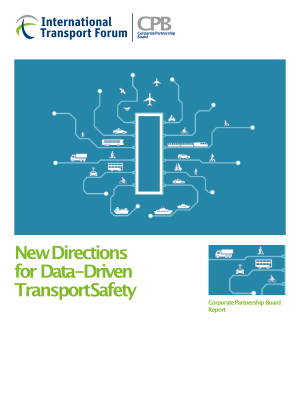
This report explores how seamless data collection, analysis and sharing can unlock innovations in transport safety. Most interventions to improve transport safety are reactions to incidents. Connected vehicles, smartphone apps, ubiquitous sensors, data sharing and machine learning make proactive transport safety interventions possible and prevent crashes before they happen. Drawing on the Safe System approach, this report examines how transport stakeholders can make better decisions by using more relevant and timely data.
Road Safety Annual Report 2019
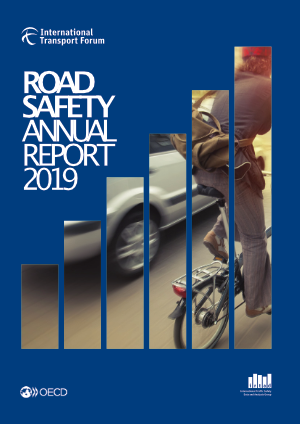
The IRTAD Road Safety Annual Report 2019 provides an overview of road safety performance for 41 countries. The report outlines the most recent road safety developments there and provides comparative data for the main road safety indicators. It also offers detailed analysis by road user, age group and types of road. It describes the crash data collection process in IRTAD countries, the road safety strategies and targets in place and information on recent trends in speeding, drink-driving and other aspects of road user behaviour.
Road Safety Policy and Traffic Safety Information System in Cambodia
Learning Lessons: Improving Road Safety in Asia and the Pacific
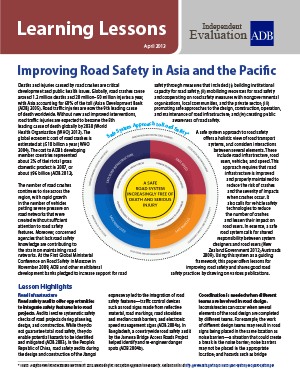
Deaths and injuries caused by road crashes are critical development and public health issues. Globally, road crashes cause around 1.2 million deaths and 20 million-50 million injuries a year, with Asia accounting for 60% of the toll (ADB 2005). Road traffic injuries are now the 9th leading cause of death worldwide. Without new and improved interventions, road traffic injuries are expected to become the 5th leading cause of death globally by 2030 (WHO 2013). The global economic cost of road crashes is estimated at $518 billion a year (WHO 2004). The cost to ADB's developing member countries represented about 2% of their total gross domestic product in 2007, or about $96 billion (ADB 2012).
The number of road crashes continues to rise across the region, with rapid growth in the number of vehicles putting severe pressure on road networks that were created without sufficient attention to road safety features. Moreover, concerned agencies that lack road safety knowledge are contributing to the strain on maintaining road networks. At the First Global Ministerial Conference on Road Safety in Moscow in November 2009, ADB and other multilateral development banks pledged to increase support for road safety through measures that included (i) building institutional capacity for road safety; (ii) mobilizing resources for road safety and cooperating on road safety measures with nongovernmental organizations, local communities, and the private sector; (iii) promoting safe approaches to the design, construction, operation, and maintenance of road infrastructure; and (iv) creating public awareness of road safety.
A safe system approach to road safety offers a holistic view of road transport systems, and considers interactions between several elements. These include road infrastructure, road users, vehicles, and speed. This approach requires that road infrastructure is improved and properly maintained to reduce the risk of crashes and the severity of impacts when crashes occur. It also calls for vehicle safety technologies to reduce the number of crashes and lessen their impact on road users. In essence, a safe road system calls for shared responsibility between system designers and road users (New Zealand Government 2012; Austroads 2009). Using this system as a guiding framework, this paper offers lessons for improving road safety and shares good road safety practices by drawing on various publications.
Road Safety Action Plan: An Overview
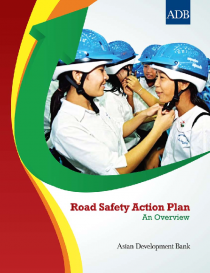
The Asian Development Bank has established the Sustainable Transport Initiative to align its transport operations with ADB's long-term strategic framework, Strategy 2020. In July 2010, ADB approved the Sustainable Transport Initiative Operational Plan, which identifies road safety as one of the priority areas to be mainstreamed and scaled up in ADB's transport operations. To guide its work on mainstreaming road safety, ADB developed the Road Safety Action Plan. It provides the basis for ADB to play a more proactive role to support developing countries in Asia and the Pacific in their efforts to achieve sustainable, effective, and cost-effective improvements in road safety.
Road Safety Action Plan: Implementation of Sustainable Transport Initiative - Mainstreaming Road Safety in ADB Operations Action Plan
Recognizing the extent of the road safety problem in developing countries and the great potential for supporting interventions to alleviate this problem, ADB and other multilateral development banks (MDBs) have (i) committed to establishing a Shared Approach to Managing Road Safety in support of achieving the goal of the Decade of Action, (ii) established a working group on road safety to share best practices, coordinate efforts, and establish partnerships to road safety work, and (iii) started to explore ways of attracting additional dedicated financing for road safety.
This manual explains good practices for roadwork sites, offering clear and simple guidance for CAREC road authorities to use to improve road safety at these sites for road users and workers alike. It offers information about the six-zone process, how to plan and implement a traffic management plan, and how to manage a safe worksite. This manual is essential reading for project managers, designers, supervision consultants, contractors, works supervisors and others who have a responsibility for safe worksites.
About the CAREC Road Safety Engineering Manuals
The series of road safety engineering manuals of the CAREC Program came from the endorsement of the CAREC Road Safety Strategy 2017-2030 by member countries. The strategy supports and encourages CAREC authorities to plan, design, construct, and maintain safe roads.
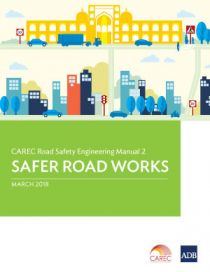
Research indicates that up to 28% of crashes are due to the road environment. The first and most important objective of road safety audit is to minimize the risk of crashes, and to minimize the severity of any crashes that may occur on a new road project. Road safety audit is suggested to be undertaken for all CAREC road projects. This manual provides full information for those who undertake the audits (practitioners) as well as for those who manage the audit process (policy makers).
About the CAREC Road Safety Engineering Manuals
The series of road safety engineering manuals of the CAREC Program came from the endorsement of the CAREC Road Safety Strategy 2017-2030 by member countries. The strategy supports and encourages CAREC authorities to plan, design, construct, and maintain safe roads.
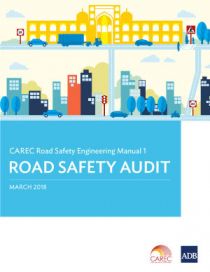
Arrive Alive: ASEAN Regional Road Safety and Action Plan (2005-2010)

One plan for each country was developed, via national workshops with the assistance of 90-100 road safety professionals from key agencies. These reports were also created with the assistance of private sector and nongovernment organizations. The plans focus on improvement of safety for vulnerable road users (especially pedestrians and motorcyclists) who form the vast bulk of deaths and injuries in ASEAN region.
Pagination
- Previous page
- Page 9
- Next page